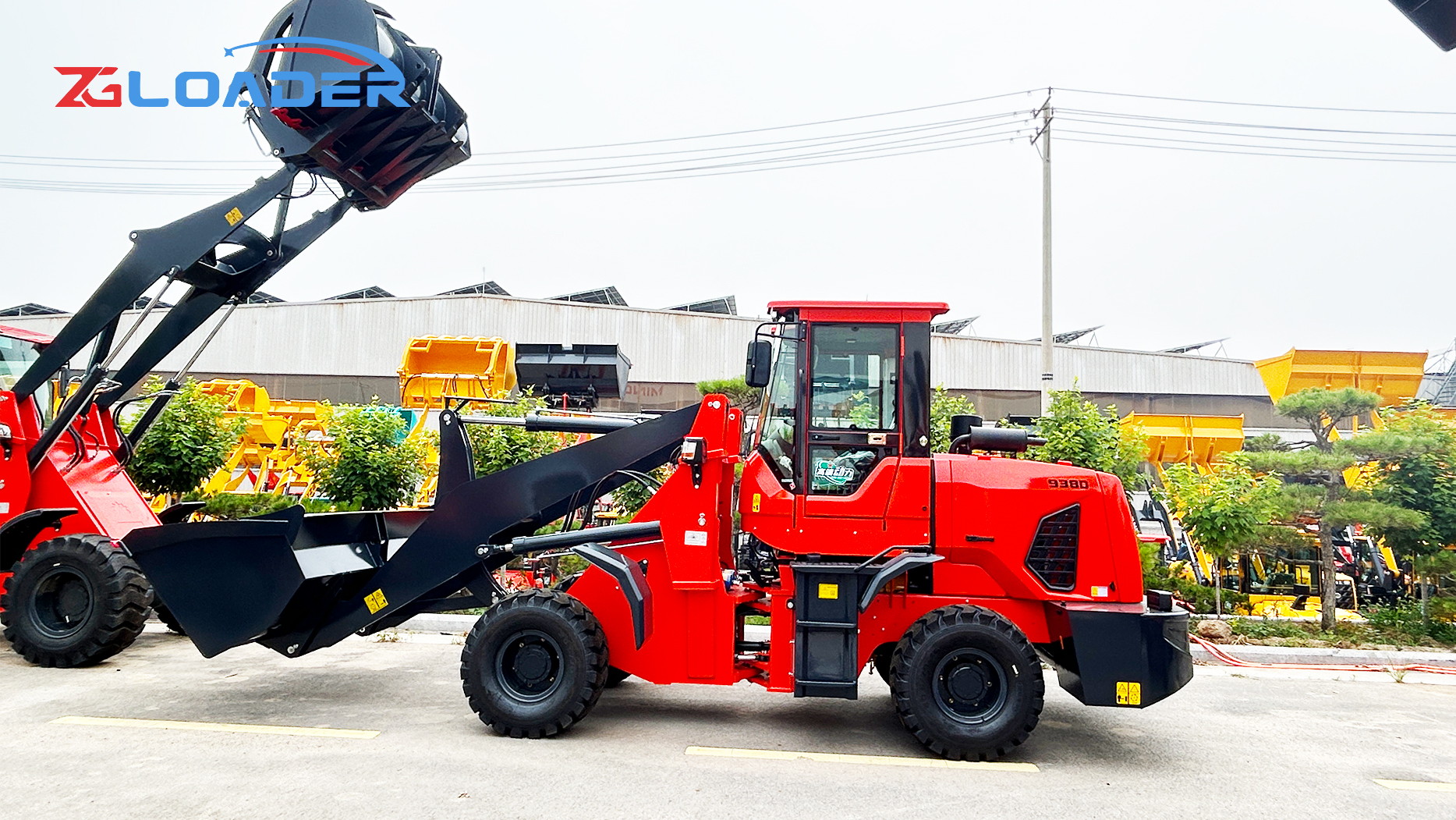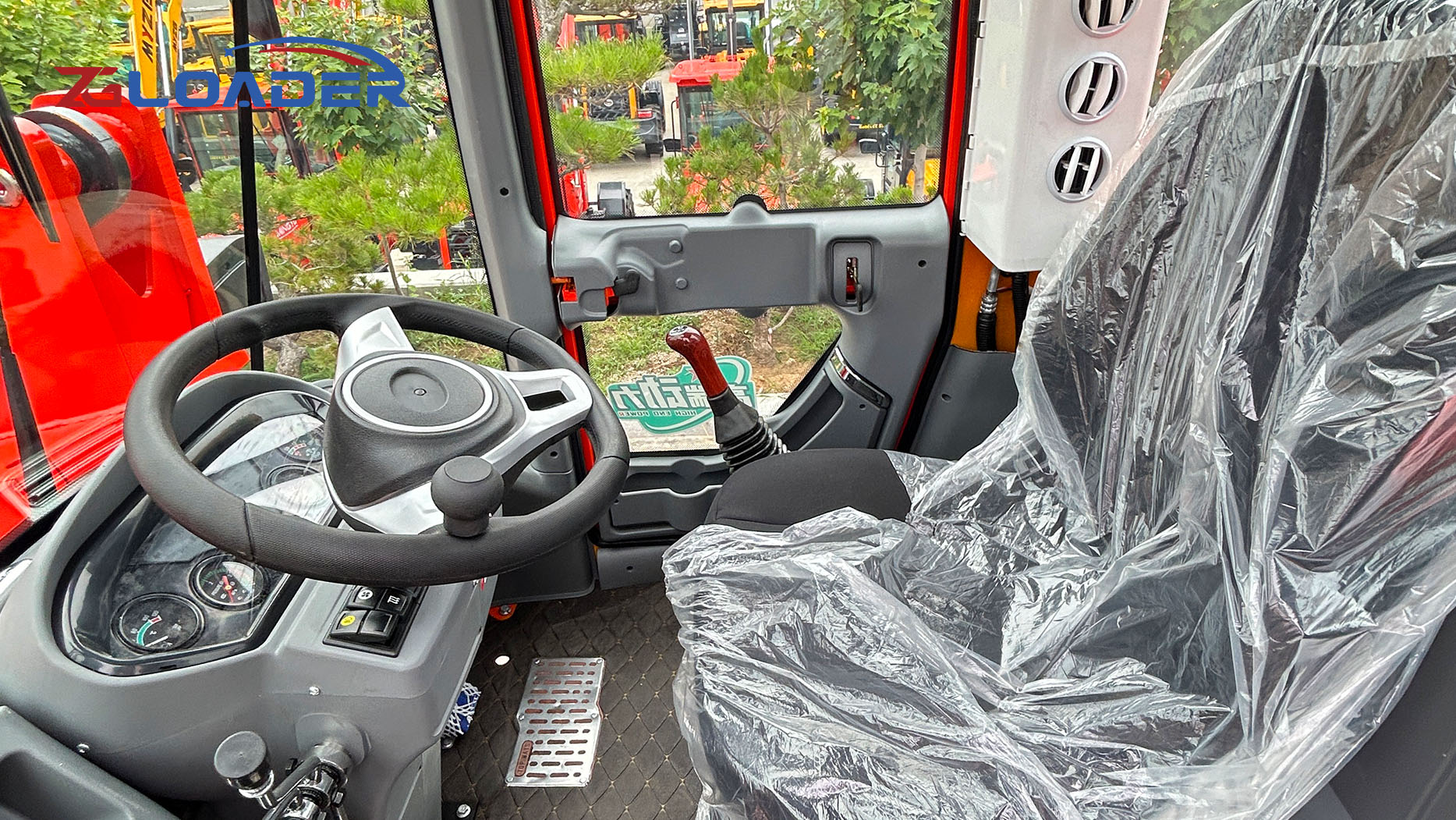Front loaders, also known as wheel loaders or bucket loaders, are versatile heavy-duty machines used extensively in construction, mining, agriculture, and material handling. Their primary function is to load and move materials like earth, gravel, sand, rubble, and debris using a large bucket attached to the front. This article provides a detailed exploration of front loaders, covering their functionality, types, applications, key components, operational considerations, and advancements in technology.
Understanding the Functionality of a Front Loader:
Front end loaders operate on a simple yet effective principle. A large bucket, mounted at the front of the machine via a hydraulically actuated arm, scoops up material. The loader then transports the material to a desired location, where the bucket is tilted forward to discharge the load. This process is repeated as needed, making front loaders efficient tools for loading trucks, hoppers, or stockpiles, as well as for carrying and dumping materials over short to medium distances.
Key Components and Systems:
Chassis/Frame: The robust frame forms the backbone of the front loader, providing structural support and housing the engine, transmission, and hydraulic systems. It's designed to withstand the stresses of heavy lifting and rough terrain.
Engine: Front loaders typically utilize powerful diesel engines to provide the necessary power for digging, lifting, and moving heavy loads. Engine power directly influences the loader's performance and productivity.
Transmission: The transmission system transfers power from the engine to the wheels, enabling the loader to move. Different types of transmissions are used, including powershift transmissions, hydrostatic transmissions, and others. The choice of transmission impacts the loader's speed, maneuverability, and efficiency.
Hydraulic System: The hydraulic system is the heart of the front loader, providing the force needed to operate the bucket, lift arms, and steering. High-pressure hydraulic fluid is used to actuate cylinders that control the movement of these components. Modern loaders often feature sophisticated hydraulic systems with load-sensing capabilities and other advanced features.
Bucket: The bucket is the primary tool of the front loader. It comes in various sizes and designs depending on the application. General-purpose buckets are used for a wide range of materials, while specialized buckets are designed for specific tasks, such as handling light materials, rocks, or demolition debris. Some buckets also feature teeth or cutting edges for improved digging performance.
Lift Arms: The lift arms connect the bucket to the loader's chassis. They are hydraulically actuated to raise and lower the bucket, allowing the loader to dig, carry, and dump materials. The design and strength of the lift arms are critical for the loader's lifting capacity and reach.
Tires: Front loaders typically use large, heavy-duty tires designed to handle the weight of the machine and the loads it carries. Tire type and size are chosen based on the terrain and application.
Operator Cab: The operator cab provides a safe and comfortable environment for the operator. Modern cabs are often equipped with features like air conditioning, comfortable seating, and intuitive controls to enhance operator productivity and reduce fatigue.
Steering System: Front loaders typically use articulated steering, where the front and rear sections of the machine are connected by a hinge. This allows for a tight turning radius, making the loader highly maneuverable, especially in confined spaces.
Types of Front Loaders:
Front loaders come in various sizes and configurations, each designed for specific applications:
Compact Loaders: Smaller loaders, often used in landscaping, light construction, and material handling in confined areas. They are highly maneuverable and easy to transport.
Medium-Sized Loaders: A versatile class of loaders used in a wide range of applications, including construction, mining, and agriculture. They offer a good balance of power, capacity, and maneuverability.
Large Loaders: Heavy-duty loaders designed for large-scale operations in mining, quarries, and heavy construction. They have high lifting capacities and are capable of moving large volumes of material.
Track Loaders: Instead of wheels, track loaders utilize tracks, providing superior traction and stability on uneven or soft terrain. They are often used in demolition, site cleanup, and other applications where wheeled loaders may struggle.
Swing Loaders: These loaders have a rotating upper structure, allowing the bucket to swing sideways. This feature is particularly useful in confined spaces and for loading trucks or hoppers positioned at an angle.
Applications of Front Loaders:
Front loaders are indispensable in a wide range of industries and applications:
Construction: Loading and moving construction materials, site cleanup, backfilling, and general material handling.
Mining: Loading ore, overburden, and other materials in mining operations.
Agriculture: Loading grain, silage, fertilizer, and other agricultural products.
Material Handling: Moving materials in recycling plants, ports, and other industrial settings.
Waste Management: Loading and moving waste materials in landfills and transfer stations.
Landscaping: Moving soil, mulch, and other landscaping materials.
Snow Removal: Clearing snow from roads and parking lots (with appropriate attachments).
Operational Considerations:
Safe Operating Practices: Proper training and adherence to safety guidelines are essential for operating a front loader safely. This includes pre-operation checks, understanding load limits, and being aware of surroundings.
Material Handling Techniques: Efficient material handling techniques are crucial for maximizing productivity and minimizing wear and tear on the machine. This includes proper bucket loading, carrying, and dumping techniques.
Maintenance: Regular maintenance is essential for keeping the front loader in good working condition and preventing breakdowns. This includes checking fluid levels, inspecting tires, and lubricating moving parts.
Attachment Selection: Choosing the right attachment for the job is crucial for optimizing performance and efficiency. Different buckets, forks, and other attachments are available for specific tasks.
Conclusion:
Front loaders are essential pieces of equipment in a wide range of industries. Their versatility, power, and efficiency make them indispensable for material handling, construction, mining, and many other applications. As technology continues to advance, front loaders are becoming even more sophisticated, offering improved performance, safety, and environmental friendliness. Understanding the different types of front loaders, their applications, and operational considerations is crucial for selecting the right machine for the job and maximizing its productivity.
Post time:Feb.06.2025



